#Decapods
Explore tagged Tumblr posts
Text

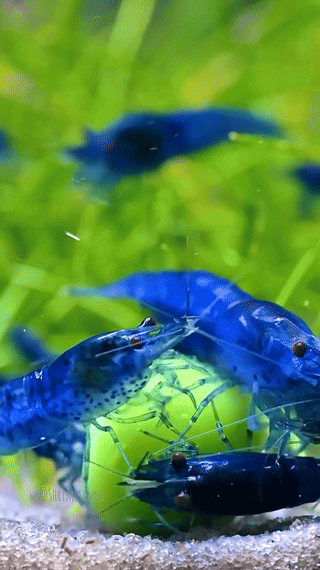
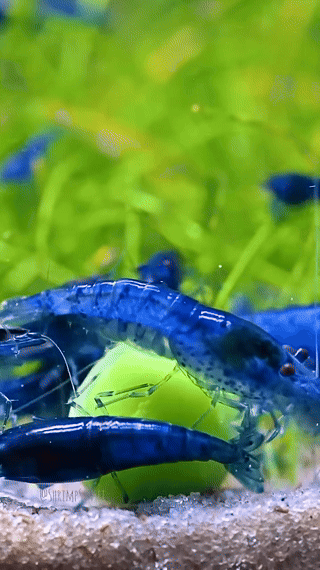
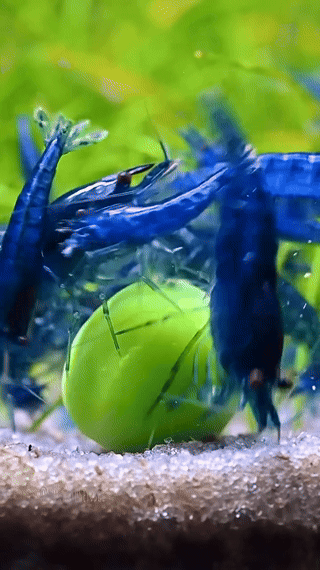
blue dream shrimp (neocaridina davidi) having a snack | shrimpsensei on ig
#stim#shrimp#sea creatures#crustaceans#sfw#green#blue#brown#blue dream shrimp#neocaridina davidi#peas#food#sand#underwater#decapods#animals#shiny#ishy gifs#postish
1K notes
·
View notes
Text
Uncharismatic Fact of the Day
Some animals like to live alone, and rarely see other members of their own species. Others...don't. The common yabby is known for living in dense populations; in some areas, there can be as many as 400 burrows per square meter!

(Image: A common yabby (Cherax destructor) by David Sinnot)
278 notes
·
View notes
Text
Taxonomy Tournament: Crustaceans


Decapods. This order includes crabs, lobsters, crayfish, shrimp, and prawns.
Isopoda. This order is made up of isopods, including terrestrial species like the potato bug and aquatic species like the giant isopod. Some eat dead matter, others are filter feeders, and some are parasites, mostly of fish.
#10 vs =#animals#biology#polls#poll tournament#zoology#crabs#lobsters#crayfish#shrimp#prawns#arthropods#crustaceans#ecdytes#isopods#animal parasite#Decapods#Isopoda#0x32v0x4d
284 notes
·
View notes
Text

Lysmata boggessi
#lysmata boggessi#wikipedia#wikipedia pictures#wikimedia commons#nature#animals#shrimp#saltwater shrimp#arthropoda#arthropods#malacostraca#decapoda#pleocyemata#caridea#lysmatidae#l. boggessi#marine biology#marine biodiversity#marine animal#marine life#ocean life#ocean animals#oceancore#ocean aesthetic#sea life#sea animals#marine creatures#sea creatures#ocean creatures#decapods
71 notes
·
View notes
Text


okay for you sea life and crab lovers i have a pic of this very tiny and pretty crab... SIKE ITS NOT A CRAB!!! notice how it only has six legs??? its a faker. a knockoff. an imitator if you will...
this spotted porcelain crab (Porcellanella triloba) are not easy to find... because they hide inside sea pens. if you dont know what a sea pen is... look at the second picture. just another one of the weird and wonderful things nature has created
they got a symbiotic relationship... the sea pen hides the crab and protects it with its spines and the crab eats the filth that flows past...
yeah porcelain crabs are cool hell yeah
#photography#nature#macro#arthropods#animals#crabs#decapods#porcelain crabs#crustacean#intertidal#sea pen#marine biology#aquatic life#sea creatures
20 notes
·
View notes
Text

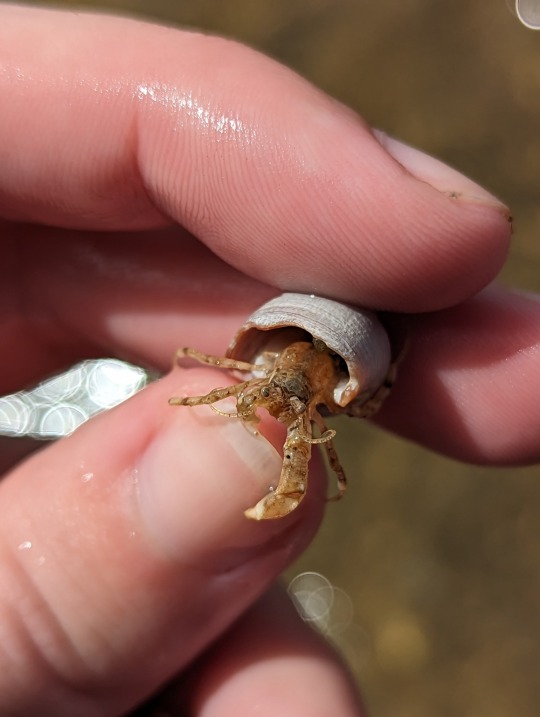
Photos 1-2 - Specimen 1
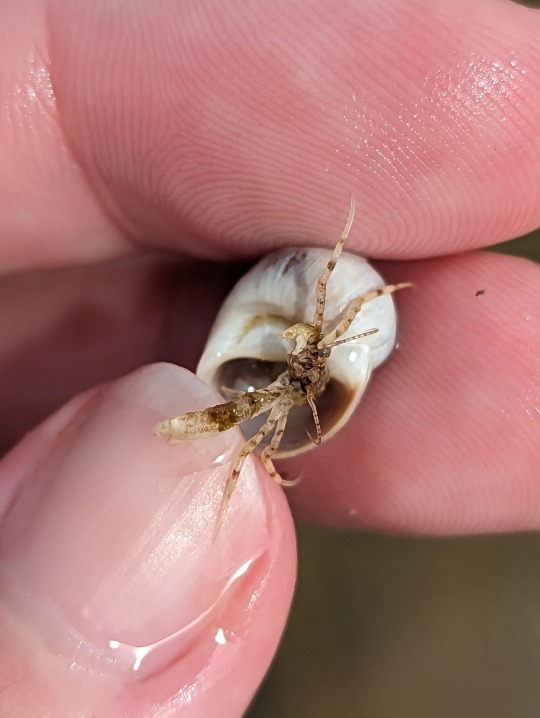
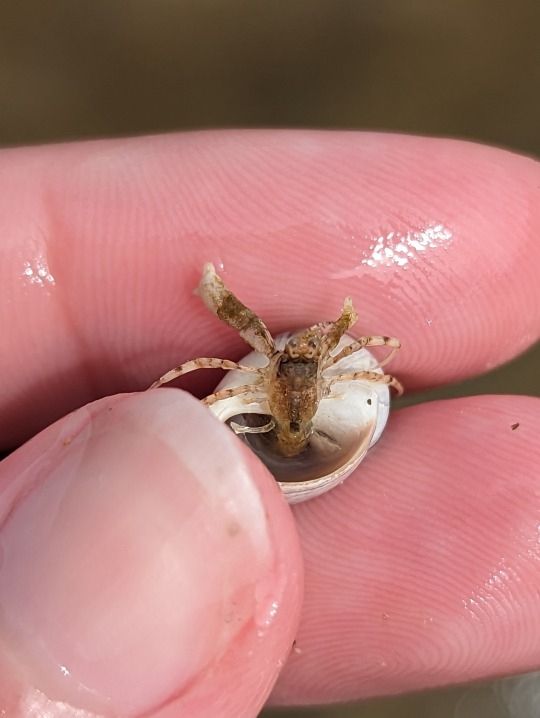
Photos 3-4 - Specimen 2

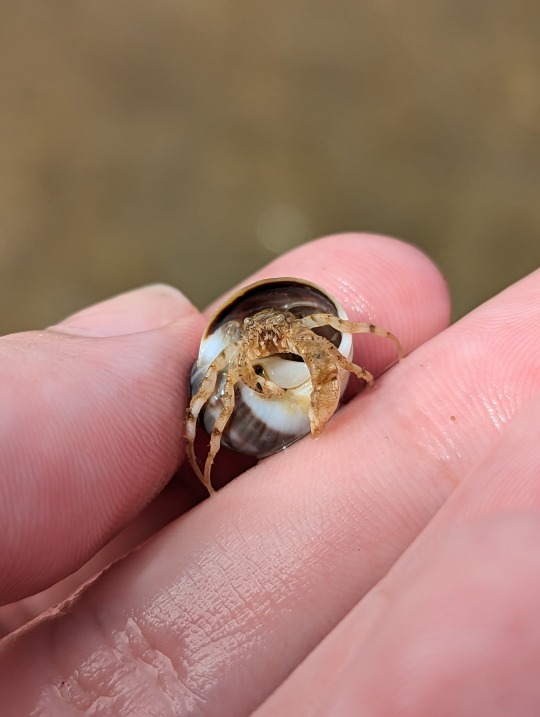
Photos 5-6 - Specimen 3
D. senex hermit crabs residing in empty Moon Snail shells.
13/08/23 - Diogenes senex
QLD:WET - Flying Fish Point, low tide sandy bay
#invertblr#invertebrates#Arthropods#Arthropoda#Diogenes senex#Paguroidea#Hermit Crabs#Decapoda#Decapods#Crustacea#Crustaceans#hermit crabs#crabs
64 notes
·
View notes
Text
Choose one (musical decapods edition)
You can choose the crab and lobster type
You may also suggest one :)
#decapods#crab#shrimp#lobster#rock lobster#art prompt#drawing#poll#rock music#aphelion's abyss#crustacean#art
12 notes
·
View notes
Note
Out of curiosity what sort of Mer bitty is a Cross!sans?
Oh, we don't have any Cross varieties specific to the shop but...um... *searches records*
We've rescued quite a few that seem to have a nurse shark as a tail type. um....they seem to like forming groups with other bitties.
let's call them decapods then. (even if they do not have any feet at all)
3 notes
·
View notes
Text
Important note on origin of animal life
Evolutionary-wise, early life on Marmakul had three unrelated ancestors for animal life. So it resulted in three main brunches.
Decapods (10 limbs)
Tetrapods (4 limbs)
Asymmetrical pentapods (5 limbs)
And in process of evolution things happened so not all creatures remained with number of limbs mentioned above.
#abo dynamics#spec evo#speculative biology#worldbuilding#white waters of abo#artists on tumblr#alpha beta omega#omegaverse#abo#speculative evolution#asymmetrical animals#decapods#hexapods#tetrapods#bipods#shit got really weird#tiktaalik and her kin are probably laughing
6 notes
·
View notes
Text

A Halloween crab for the final day of Invertober!
[Image description: A digital drawing of a Halloween crab. Its body is black on top and red on the bottom. Both eyes have yellow markings resembling large eyebrows above and on the outer side, giving them a pleading look. The frontmost legs are dark purple with pale blue pincers, and the other legs are red gradienting to yellow at the tips. Text below: Arthropoda • Malacostraca • Decapoda • Gecarcinidae • Gecarcinus lateralis
End ID.]
3 notes
·
View notes
Text

Day 2 of posting my favorite drawings I’ve made
This was an assignment from art class
12 notes
·
View notes
Text
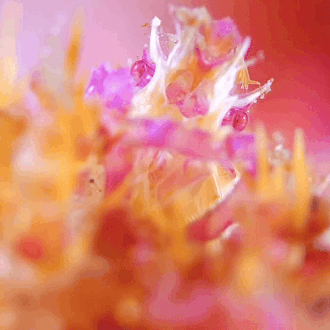
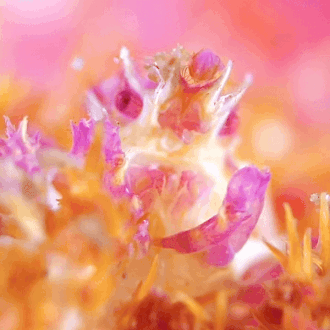
the candy crab (hoplophrys oatesi) | jacobguy.media on ig
#stim#crabs#crustaceans#sea creatures#sfw#pink#orange#magenta#white#candy crab#decapods#arthropods#hoplophrys oatesi#animals#underwater#coral reefs#ishy gifs#postish
527 notes
·
View notes
Text



The Novel Norway Lobster
Nephrops norvegicus, better known as the Norway lobster, the Dublin Bay lobster, or in its culinary form as langoustine or scampi, is a small lobster found all along the European coast in the Atlantic ocean, from Norway and Iceland to Portugal, as well as the Adriatic Sea. They reside in muddy seabeds at up to 800 m (0.5 mi) below the surface.
Norway lobsters spend most of their time digging, maintaining, and hiding in their burrows, which are built about 20 to 30 cm (8 to 12 in) deep in the mud. When they do leave their burrows, it is only to forage or mate. Like many lobsters, N. norvegicus is an omnivore; they feed on anything they can find, including carrion, worms, fish, jellyfish, and other crustaceans. Predators include larger crustaceans, such as shore crabs, cod, stingrays, and small spotted catsharks.
The breeding period for Dublin Bay lobsters depends on the population's location and the temperature of the water, but generally takes place in late winter or spring. Females typically mate with 2-3 males, and carries 1000-5000 eggs under her tail for 8 to 9 months. After hatching, the planktonic larvae drift through the ocean for about two months, during which time they rise to the surface at night and descend to the ocean floor during the day. After settling on the bottom, juveniles undergo a molt before becoming fully mature. Afterwards, adults typically undergo 1-2 molts every year, and can live up to 10 years in the wild.
N. norvegicus is typically pink or orange in color, with a white underbelly and a darker stripe along the upper part of the claw. Adults can reach up to 20 cm (8 in) in length including the claws, which can comprise up to half that length. Its large eyes are exceptionally sensitive to light, and Norway lobsters are rarely seen during the daytime.
Conservation status: The Dublin Bay lobster is classified as Least Concern by the IUCN. It is commonly harvested for food, and populations are monitored closely.
Photos
Sue Scott
Institute of Marine Research
Hans Hillewaert
#norway lobster#dublin bay lobster#Decapoda#Nephropidae#lobsters#decapods#malacostracans#arthropods#marine fauna#marine arthropods#benthic fauna#benthic arthropods#deep sea fauna#deep sea arthropods#Atlantic ocean#Adriatic Sea#animal facts#biology#zoology#ecology
402 notes
·
View notes
Text
Taxonomy Tournament: Crustaceans

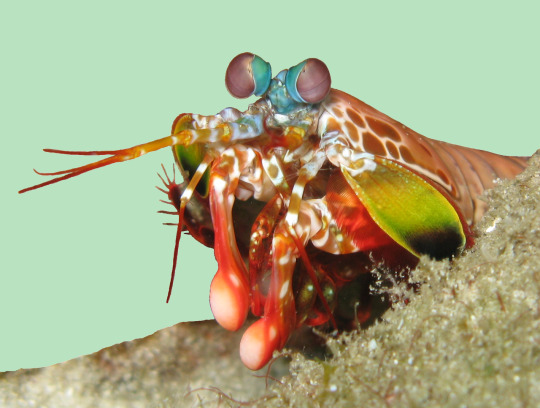
Decapods. This order includes crabs, lobsters, crayfish, shrimp, and prawns.
Stomatopoda. This order is made up of mantis shrimp, marine predators with appendages adapted for powerful close-range combat.
#animals#biology#polls#poll tournament#zoology#crabs#lobsters#crayfish#shrimp#prawns#arthropods#crustaceans#ecdytes#mantis shrimp#Decapods#Stomatopoda#0x32v0xcd#animal tournament#Animal Tournament Round 1
63 notes
·
View notes
Text
He wants to be a filmmaker.
31K notes
·
View notes
Text
The Fascinating World of 10-Legged Marine Crustaceans
Marine ecosystems are home to an astonishing diversity of creatures, and among the most intriguing are the 10-legged crustaceans belonging to the order Decapoda. This group, whose name derives from the Greek words "deka" (ten) and "pous" (foot), includes a wide variety of species such as crabs, lobsters, shrimp, and prawns. These decapods play vital roles in marine food webs, exhibit fascinating behaviors, and possess unique adaptations that allow them to thrive in diverse aquatic environments.
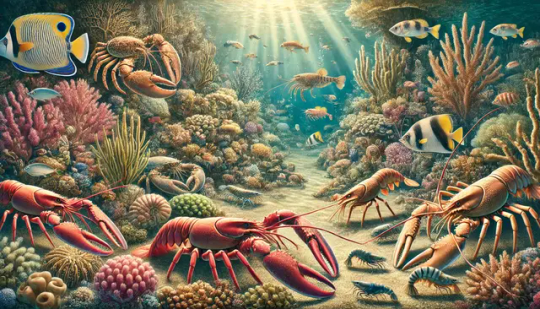
What Are Decapods?
Decapods are a group of crustaceans characterized by having five pairs of legs, which contribute to their mobility and ability to interact with their environment. These legs serve various purposes: some are used for walking, others for swimming, and in certain species, the front pair is modified into claws or pincers (chelae) for defense, hunting, or communication.
They are found across the globe, inhabiting environments ranging from shallow coastal waters to the deepest parts of the ocean. Decapods can vary greatly in size, from tiny shrimp measuring just a few millimeters to massive lobsters that weigh several kilograms.
Key Types of Decapods
Crabs Crabs are perhaps the most recognizable decapods, with their broad, flattened bodies and prominent pincers. They are highly adaptable and can be found in marine, freshwater, and even terrestrial habitats. Some, like the blue crab, are vital to commercial fisheries, while others, such as the coconut crab, are known for their impressive size and unique behaviors.
Lobsters Lobsters are elongated decapods with a hard exoskeleton and large, powerful claws. The American lobster is a culinary favorite, prized for its sweet, tender meat. Spiny lobsters, on the other hand, lack large claws but are equipped with long, spiny antennae for protection.
Shrimp Shrimp are small, streamlined decapods that are abundant in both marine and freshwater environments. They are crucial in the diets of many larger animals and are a staple in human cuisine. Some species, like the pistol shrimp, are famous for their unique adaptations, such as the ability to create shockwaves with their claws.
Prawns Though often confused with shrimp, prawns are distinct in their anatomy and habitat preferences. They are typically found in calmer waters and are another important food source globally.
Hermit Crabs Although not true crabs, hermit crabs are also members of the Decapoda order. They have soft abdomens and rely on scavenged shells for protection, often switching shells as they grow.
Ecological Importance
Decapods are crucial to marine ecosystems. As both predators and prey, they help regulate populations of other species and serve as a vital link in the food chain. For example:
Crabs scavenge on the ocean floor, recycling nutrients.
Shrimp filter-feed, improving water quality.
Lobsters control populations of smaller invertebrates and contribute to the balance of their habitats.
Additionally, decapods contribute significantly to human economies. Fisheries and aquaculture operations depend on species like shrimp, lobsters, and crabs, which are among the most valuable seafood commodities worldwide.
Unique Adaptations
Decapods exhibit an impressive array of adaptations that allow them to survive and thrive in challenging environments. For instance:
Exoskeletons: Made of chitin, their hard shells provide protection against predators and physical damage.
Regeneration: Many decapods can regenerate lost limbs, an ability that enhances their survival.
Camouflage: Some species, like the decorator crab, use their environment to blend in and evade predators.
Communication: Lobsters and crabs use claw gestures, body movements, and even sound to communicate.
Conservation Concerns
Despite their resilience, many decapod species face threats from overfishing, habitat destruction, and climate change. Warming oceans and acidification, for example, can affect their shell formation and reproductive success. Sustainable fishing practices and habitat protection are essential to ensure the long-term health of decapod populations.
Conclusion
The 10-legged marine crustaceans of the Decapoda order are a testament to the adaptability and diversity of life in our oceans. From their ecological roles to their economic significance, they are integral to both natural ecosystems and human livelihoods. By understanding and protecting these fascinating creatures, we can ensure they continue to thrive in the ever-changing marine world.
1 note
·
View note